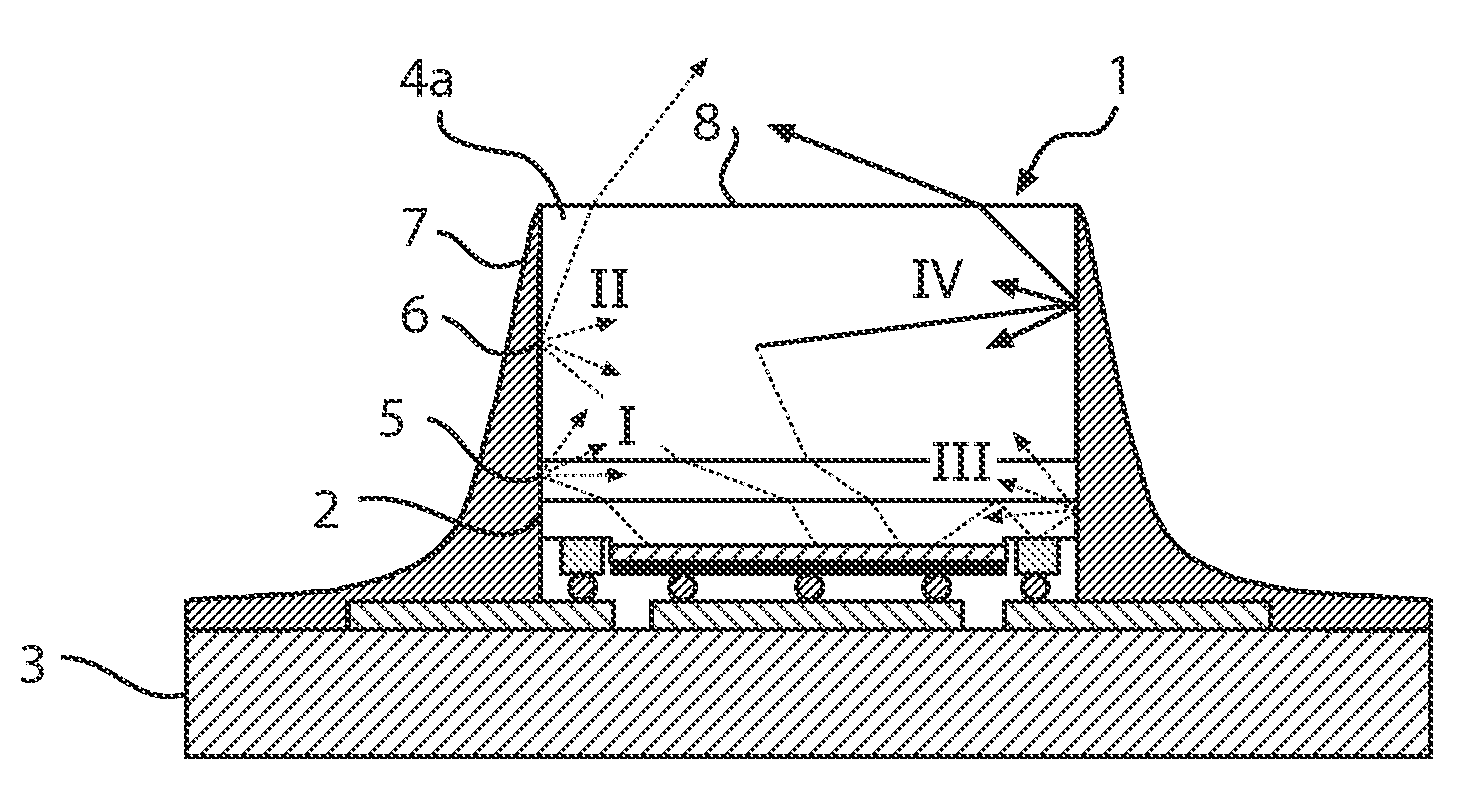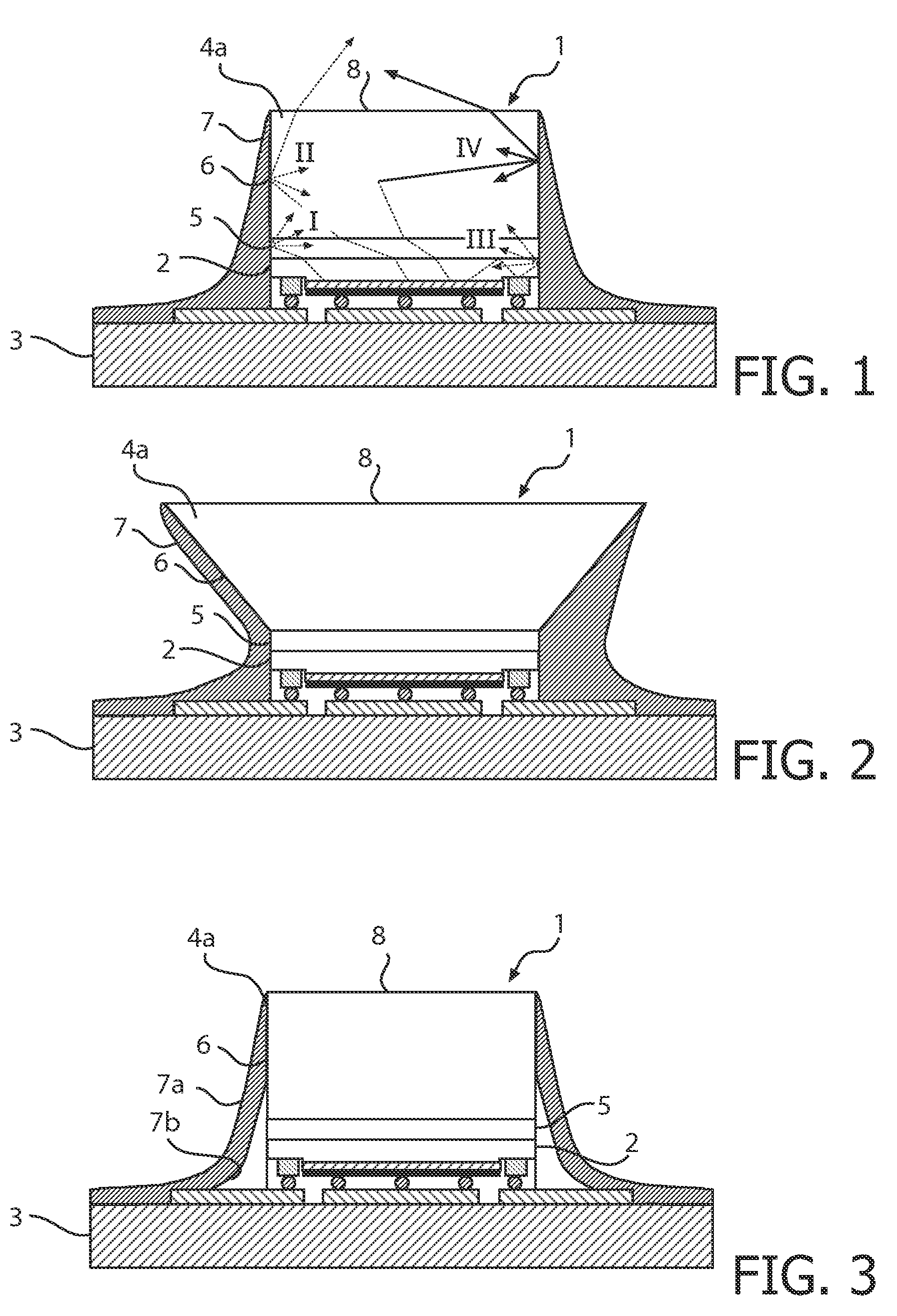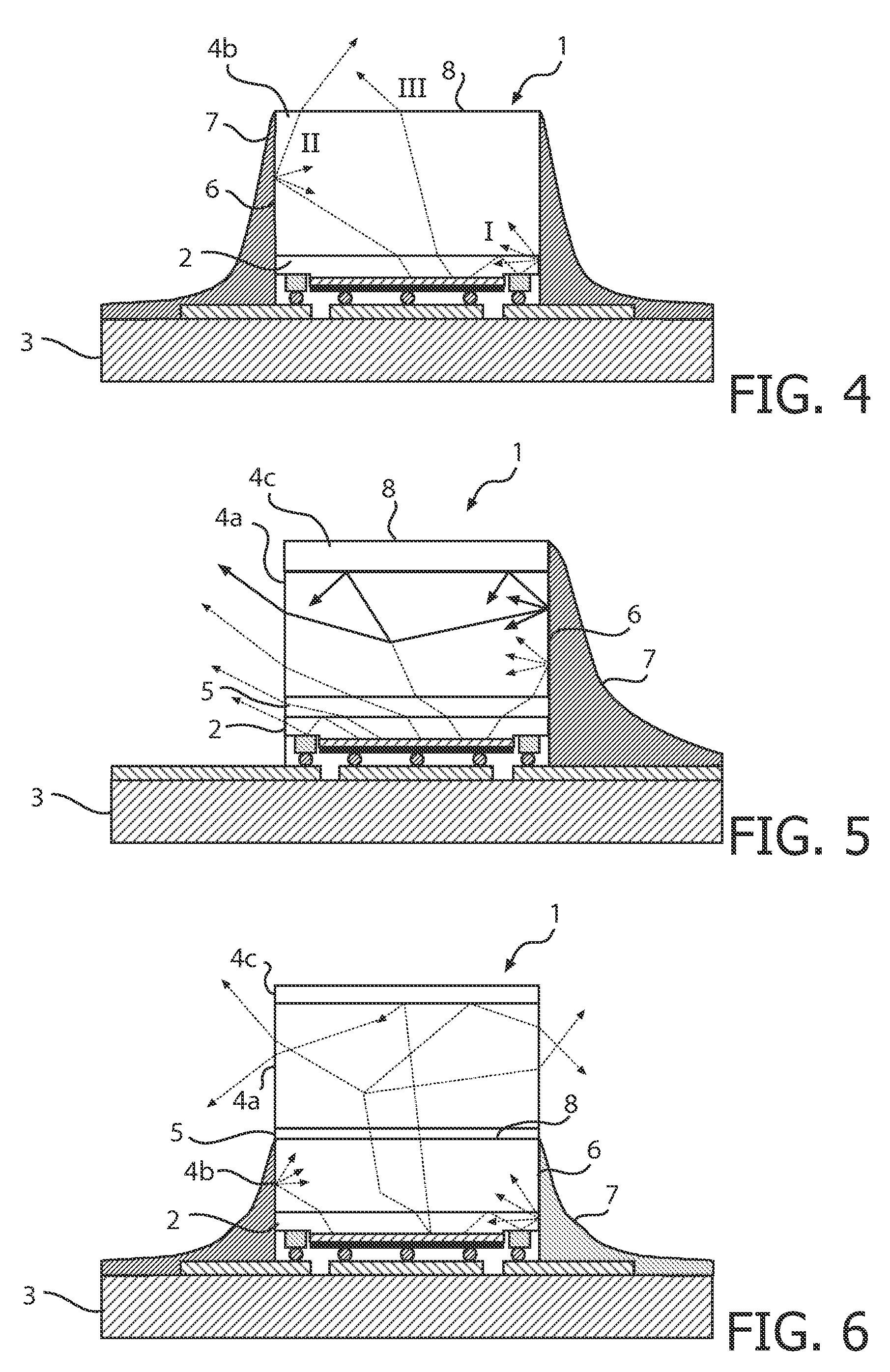Coated light emitting device and method for coating thereof
a light-emitting device and light-emitting technology, applied in the direction of semiconductor/solid-state device manufacturing, semiconductor devices, electrical devices, etc., can solve the problems of stokes shift loss, efficiency loss, and severe loss of both material systems
- Summary
- Abstract
- Description
- Claims
- Application Information
AI Technical Summary
Benefits of technology
Problems solved by technology
Method used
Image
Examples
embodiment 1
[0080]Many variations of embodiment 1 may be perceived. For example, full conversion or partial conversion phosphor top emitter may be used. For full conversion, the phosphor absorbs blue light and converts it to a large extent to another color with higher wavelength. The amount to which this occurs depends on the Lumiramic thickness and the concentration and absorption coefficients of the luminescence centers in the phosphor. It is strived to achieve sufficiently large path lengths in the phosphor to convert nearly all blue light to larger wavelengths such as green, amber or red. Due to the side coating, the over-angle color performance is very good, i.e. there is no blue light leak at larger angles.
[0081]Another embodiment of the device of the present invention is illustrated in FIG. 2.
[0082]This embodiment is similar to embodiment 1, except that the side faces of the phosphor body 4a are angled, to have an overhang compared to the LED. Reflective coating is present on the right a...
embodiment 5
[0103]In this embodiment of a side emitting light emitting device, similar to embodiment 5, a substrate is still present on the LED underneath the phosphor body. The coating layer is only present on the LED and substrate, not on the phosphor body.
[0104]As an alternative, the reflecting body may be arranged directly on the substrate. Coating may be present on the lateral surface of the substrate, without significant blue light leakage from the LED substrate side by using a reflective side coating. The phosphor may also extend beyond the LED substrate area (be oversized).
[0105]However, side emitting light emitting devices may also have other types of coating layers, such as diffusive or luminescent coating layers. By using a diffusive side-coating the angular and spectral distribution of the side-emission may be influenced, e.g. to make it more uniform.
[0106]By using a side coating that absorbs blue light and transmits converted light (e.g. amber light), a full conversion side emitter...
PUM
 Login to View More
Login to View More Abstract
Description
Claims
Application Information
 Login to View More
Login to View More - R&D
- Intellectual Property
- Life Sciences
- Materials
- Tech Scout
- Unparalleled Data Quality
- Higher Quality Content
- 60% Fewer Hallucinations
Browse by: Latest US Patents, China's latest patents, Technical Efficacy Thesaurus, Application Domain, Technology Topic, Popular Technical Reports.
© 2025 PatSnap. All rights reserved.Legal|Privacy policy|Modern Slavery Act Transparency Statement|Sitemap|About US| Contact US: help@patsnap.com



